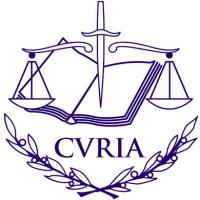ESIL – CJEU Symposium on “EU Autonomy and International Law” | Summary

On 8 April 2022, the traditional joint ESIL-CJEU Symposium took place in Luxembourg. The event was again co-organised with the Court of Justice of the European Union and prepared by ESIL Board Members Ana Mª Salinas de Frías, Ganna Yudkivska and Ramses Wessel. This year’s theme was: “EU Autonomy and International Law”. Panels were chaired by Ramses Wessel (Groningen), Tamara Perišin (General Court of the EU), and Ana Salina (Málaga).
The event was opened by CJEU President Koen Lenaerts and ESIL President Pierre d’Argent and provided a fruitful exchange between judges of the Court of the European Union, the Human Rights Court and EU and international law scholars. In his opening speech, Pierre d’Argent pointed to the foundational paradox of EU law: the EU owe its existence to International Law, but at the same time separates itself from it by choosing its own way to engage with IL.
In her keynote address, Christina Eckes (Amsterdam) argued that the autonomy of EU is absolute; it cannot be a matter of degree. This absolute autonomy hides a claim of jurisdictional sovereignty and cannot be argued under any other logic than EU law itself. In the key-note speech by Mattias Guyomar, Judge at the ECtHR, the focus was on the relationship between the two courts. He found that there is generally a positive relationship between the two courts, by that this relationship raises complex issues not only for ECtHR and CJEU, but also for domestic courts. And burden lies with the latter. He pointed to the need for both Courts to take on board each other’s case law to ensure (1) that there is no risk of double standards & (2) the effective protection of human rights.
President Koen Lenaerts focused on the nature of the EU legal order and argued that if a Member States breaks out of EU legal order, e.g. after a decision of its Constitutional Court, it not only breaks with the principle of primacy, but also with the international law principle of. International law and EU law reinforce one another to make EU law work.
Cécile Rapoport (Rennes) found that there is a special need to preserve autonomy in multilateral settings. Member States are bound by the mutual trust link and cannot disregard their EU law obligations even when acting in their sovereign capacity. She considered that specific precautions are needed, such as disconnection clauses; regard for Art. 344 TFEU; and the protection of the right to regulate in e.g. investment law. Autonomy thus shapes the EU’s contribution to international law and the techniques it uses, especially in multilateral frameworks.
In his own contribution, President Koen Lenaerts took the specific angle of constitutionalism, focusing on individuals. The CJEU made clear that direct effect is a matter of EU law itself and not national law. That is already a core element of autonomy and a foundational moment of EU law. He argued that autonomy is governed by two different but mutual reinforcing dynamics. First, autonomy implies that EU law is not ordinary international law. Secondly, autonomy implies that EU law is a self-referential system of norms that is both coherent and complete. The President of the Court explained that autonomy relates to the EU’s constitutional framework. That is the term now used and that is not an accident. Autonomy has a constitutional function: EU values define the identity of EU legal order and the EU should have power to defend values within scope of Treaties.
Former Judge Allan Rosas finds it difficult to speak about the autonomy of EU law from Member States, as they form a common legal system. It is different when it comes to EU autonomy from International Law. Yet, autonomy does not imply a downgrading of International Law and the Court should approach this with certain care. He adds that if EU legal order is fragile it is not because of the case law of the CJEU, but because of political forces within the Member States.
Katja Ziegler (Leicester) argued that there is no problem from an International Law perspective with regard to internal EU autonomy. Inter-se (almost) anything goes. Yet, in her view, there is a risk that external autonomy undermines International Law as a system of law. From an International Law perspective, autonomy cannot be absolute; it is limited by the power conferred to the international organisation. Autonomy exists on a scale; it is not an all-or-nothing concept. She further argued that it is problematic to deploy autonomy as a “turbo-charged version” of sovereignty. The CJEU could do more to reinforce the international environment, e.g. by making more use of international law standards.
AG Maciej Szpunar follows by arguing that the relation between supremacy of EU law and obligations stemming from an international agreement between two MS is not easy. The problem is how we define the scope of application of EU law. Generally, however, supremacy works.
Judge Ineta Ziemele pointed out that the EU constitutional order clearly follows a dualist doctrine in conceiving its relations with International Law; there is no self-executing character of International Law. Yet, should the CJEU resort to some monistic tendencies when acting in the light of Art. 3(5) TEU? She further questioned how a possible confrontation between international constitutional rules (jus cogens) and EU constitutional law (autonomy) could be solved. Some inspiration can be drawn from the Western Sahara cases but could the CJEU resort more boldly to the customary rules of International law?
[Many thanks to Dr. Gesa Kübek (University of Groningen) for this summary.]



